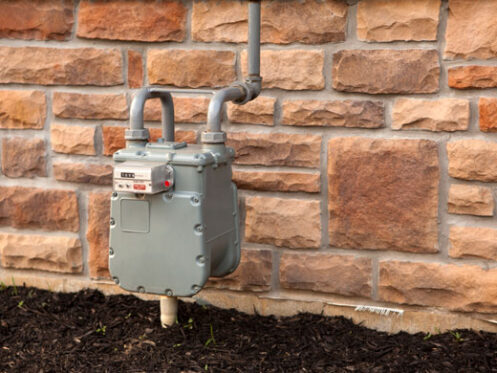Plumbing is at the heart of almost all essential utilities in your home, including water supply, heating, drainage, and irrigation in your garden. Still, you are not likely to notice this well-hidden network of pipes until there is a dripping faucet or leaking toilet in your house.
When it happens, your first response would be to start looking for ‘24-hour plumber near me’ on your phone or computer. Although you can quickly find a reliable plumber online, it is also possible to fix some plumbing issues without having to call a professional. As a homeowner, you may occasionally need to take on the role of a handyman or plumber to make small repairs.
Even when working on simple plumbing issues, you do need to take a few precautions. Here are a few potential mistakes that you need to avoid at all costs.
1. Overtightening the Connections
One of the most common mistakes is overtightening the pipes, joints, and fixtures. People often tighten a fixture or a joint to avoid a potential leak. However, excessive cranking can put too much pressure on the fixtures or joints, causing them to develop cracks and leaks over time. It usually takes a few days or weeks for the crack to develop and become noticeable.
If you want to avoid calling a 24-hour plumbing service provider in the middle of the night, make sure your plumbing joints and fixtures aren’t too tight. Especially plastic fittings in your toilet, sinks, and supply tubes are more prone to this type of leakage. So, make sure to apply the right amount of force when working on these fixtures.
2. Working without the Right Tools
Another common mistake is to start your plumbing work without keeping the required tools handy. For example, it is often better to use an adjustable wrench as plumbing work usually involves pipes of different sizes and thicknesses. You can fit an adjustable wrench over any nut and bolt firmly, ensuring the right amount of cranking when installing or repairing fixtures and connecting joints.
Some tools are designed for specific use. For example, you will need to use a sink wrench when installing faucets. As it is difficult to turn fasteners in confined spaces, you can’t use an ordinary wrench to tighten sink faucets. The unique T-shaped design of a sink wrench makes it easier to use this tool in narrow spaces.
If you don’t use the proper tools, you could end up worsening your plumbing problem or even hurting yourself. Before you start, make a list of the required tools. If you don’t have the tools you need, it is better to call for professional plumbing services in Florida.
3. Using Force to Turn a Stuck Shut-Off Valve
Before starting your plumbing work, you will need to turn off the water supply. While in some cases, you will need to turn off the main supply, when repairing a kitchen sink or toilet, you can simply turn off the shut-off valve.
However, when not used in a long time, sink and toilet shut-off valves tend to get stuck. Most DIYers will try to use brute force to close the valves. Unfortunately, using force can cause the knob or even the valve stem to break. It can also develop cracks or leakages, requiring you to call for skilled plumbing services in Florida.
Instead of using brute force, you should try using an adjustable wrench to loosen the stem nut a little. If you manage to loosen it, you can easily turn the knob. You can retighten the nut once your work is finished. You will need to check, however, if the shut-off valve has developed any leaks. If yes, you can call a 24-hour plumbing service provider.
4. Wrapping Tape in Anticlockwise Direction
Plumber’s tape, also called Teflon tape, is an essential element in securing almost all plumbing joints except for compression connection joints. This thin and flexible tape is designed to provide you with a watertight seal, making it suitable for bathroom fixtures, water lines, and drainage pipes.
The most common mistake people make when using the Teflon tape is to wrap it in anticlockwise direction. When you apply the tape in anticlockwise direction, it doesn’t coincide with the direction of threads in your fixtures. As a result, the tape will shear off when you start screwing the fittings together, beating the very purpose of using it.
When making a plumbing repair that requires Teflon tape, make sure to wrap it clockwise. You should keep the tape straight and tight when wrapping it around the threads. Usually, wrapping it five-to-six times around the threads is enough to ensure a watertight seal.
5. Ignoring Local Building Codes
Unlike licensed 24-hour plumbing service providers, DIYers are likely to ignore or forget about the local building codes. While you may not have to face immediate legal consequences for violating a building code, you could land in hot water when selling your home or renewing your home insurance. It can also lead to health and safety hazards that could go unnoticed until it’s too late.
Before you start working, make sure to understand the local and state building codes in your area. If you are unsure about what you need to do, call for a certified contractor offering plumbing services in Florida, as they are well-aware of the latest building codes and regulations.
Conclusion
Whether it is a leaky faucet or a broken pipe, plumbing issues are more common than you think. That’s why many people choose to take the DIY route, especially to fix simple plumbing issues. When you decide to fix the plumbing issues yourself, however, keeping these five things in mind will make your job easier.
Call Us for the Best Plumbing Services in Florida Today!
It is not possible to fix all plumbing issues on your own. When you are in doubt, it is always better to call a certified and experienced contractor like Erica’s Plumbing, Air Conditioning and Restoration for help.

